...Weird year, huh?
Without mentioning the c-word, let’s just say that we could never have predicted today’s circumstances at our last New Year’s Eve party – even after talking to that friend.

Without mentioning the c-word, let’s just say that we could never have predicted today’s circumstances at our last New Year’s Eve party – even after talking to that friend
Businesses in most industries will look back on this year as their biggest challenge – and those are the lucky ones
Entire marketing strategies, plans that had been carefully mapped out months in-advance, were thrown in the trash with…
- Plane tickets
- Handshakes, and
- Ball-pits
’Pivoting’ became the new buzzword and boy, was it flogged like a dead, sick horse
Marketers are now alchemists, turning now-irrelevant messages into content that was valuable and sensitive to the times.
But out of the chaos came genius. Only the most valuable, innovative, and agile strategies could make an impact in this new world – particularly for the software industry.
Now, we’re not going to undermine how messed-up it’s been lately. But we thought it might be interesting, even inspiring, to share some of the successful inbound marketing strategies used by SaaS companies around the world throughout the past year.
What we love about these inbound marketing examples isn’t that they’re simple. These companies have focused on the most important factors for content marketing success and reaped the benefits, using methods that you could start implementing tomorrow!
So take a break from the madness for just a few minutes, and check out these simple, relatable, and very clever inbound marketing strategies….
1. YouDo – Case Studies & Community Involvement
We’ve talked a lot about case studies. They’re one of the most powerful types of content marketing for SaaS companies, bridging the gap between blogs and product demos as middle-of-the-funnel content.
To explain what I mean, let’s go back to the SaaS marketing funnel – *yay*.
Blogs are top-funnel content for leads in the ‘Awareness’ phase. Prospects who’ve just come across your company, or Googled a search phrase that relates to your offering, will read blogs to understand what your product is, why it’s valuable, and whether they need it
Blogs are educational and accessible, hence why they’re most suitable to fresh prospects. Capisce?
Then there are product demos and free trials. When a lead gets to this end of the marketing funnel, they’re at the ‘Decision’ stage of the buyer journey. They want your product and they’re going to buy it.
But you can’t expect a fresh prospect to skim a blog, skip straight to the product demo and immediately make a purchase. You’ll end up with that awkward moment where they can’t commit, and you’re left disappointed.
This is one scenario where cutting out the middle man does not bode well, yet too many companies skip the mid-funnel content and end up losing potential customers who need more nurturing before they commit.
Which is why case studies are so essential to b2b inbound marketing for SaaS.
By reading a success story that demonstrates the value of your product in-context with a happy customer, prospects can:
- Self-identify as a potential client by recognizing their own pain points in the case study subject – “They sound just like us! We could benefit from that, too!”
- Understand exactly how your product works and ascertain its value by seeing how another client achieved their goals by using it.
- Get a taste of what your company is like to work with and other benefits and advantages that come with choosing you over your competitors.
When it comes to creation and delivery, case studies vary, but they don’t need to be complicated. Just telling the story of how you aced it for a client, with a testimonial in their own words, is enough to leverage your company’s advantage with prospects.
I digress. Enter, YouDo
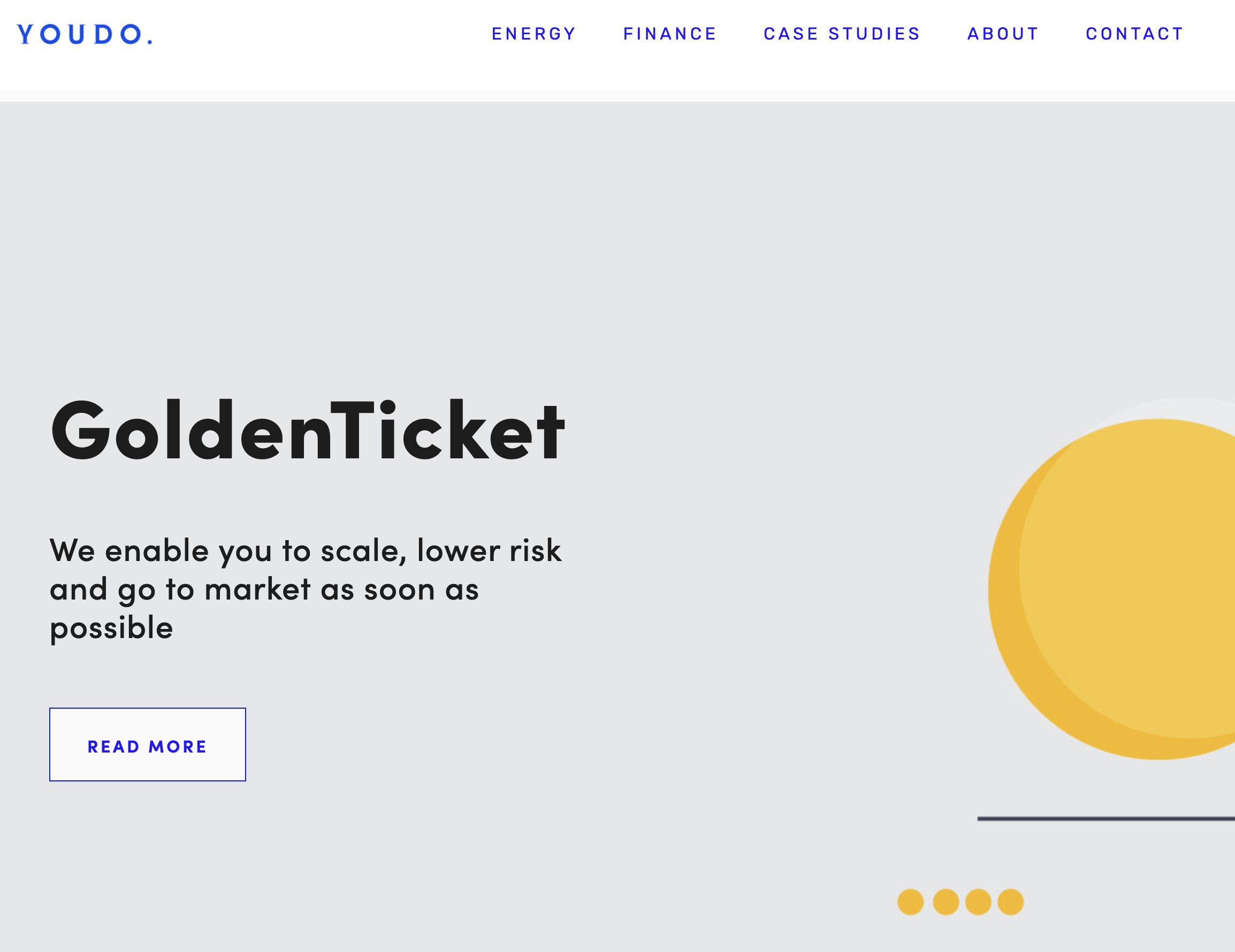
YouDo is a New Zealand owned and operated software development company. YouDo’s team builds custom software solutions for businesses in the FinTech and Energy sectors, delivering platforms that amplify their client’s advantage, solve specific challenges, and minimize risk.
It’s a powerful product to be selling, but one that requires a fair bit of education, demonstration, and social proof. Before companies are convinced that an investment in proprietary software is better than an off-the-shelf product, they need to see some examples of how it’s helped others.
A Winning Case Study Formula
To back-up their growing inbound marketing strategy, YouDo started building a goldmine of case studies to showcase their performance with key players in their three target audiences:
- Wealth managers
- FinTech startups
- Energy companies
With a product that is more ‘under the hood’ than other subscription-model software solutions (that aren’t built specifically for individual customers), YouDo needed a word-of-mouth style of messaging to showcase their capability and the value of bespoke software without compromising the internal systems used by their customers.
Case studies proved to be the perfect form of content marketing.
Case studies combined the traditional ‘word-of-mouth’ testimonial component with a carefully-written project description, demonstrating YouDo’s expertise in the energy and FinTech industries.
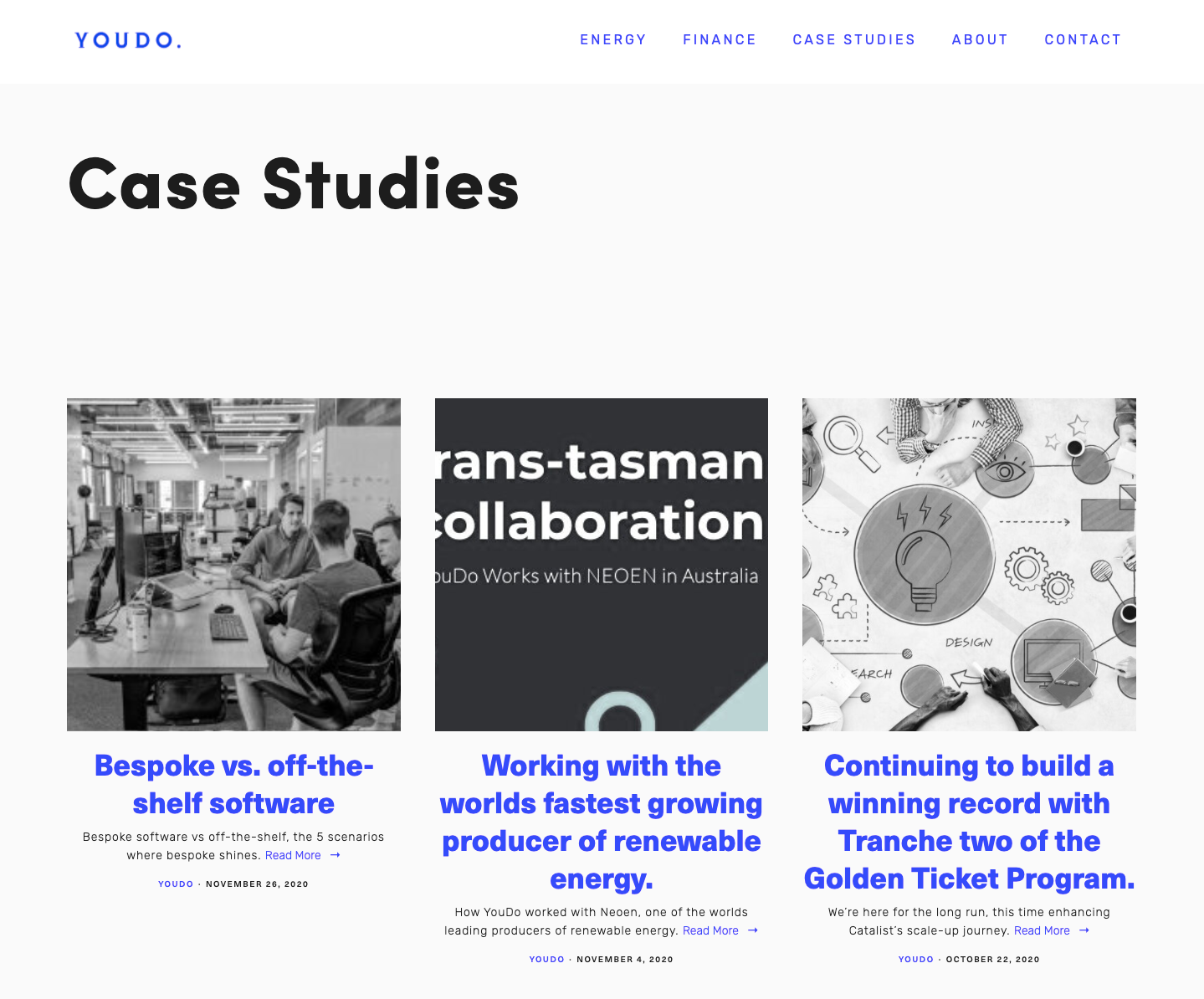
YouDo’s case studies follow a simple winning formula, one that any SaaS company could emulate effectively:
|
What? |
How? |
Why? |
|
Industry commentary |
Describing the environment or circumstances that created a need for an upgrade to bespoke software |
Helps educate potential prospects about the value of bespoke software in their sector and demonstrates YouDo’s expert-level industry knowledge |
|
Key challenges |
Outline the pain points that the customer experienced with their previous solution |
Agitates pain points for prospects who experiencing a similar problem to the customer in the case study |
|
Solution description |
Explain the features and benefits of the bespoke software platform they built for the customer (without compromising customer data and privacy) |
Shows YouDo’s capability in-context so potential customers can understand and evaluate whether a similar solution could help them |
|
Overall outcome |
Demonstrate the advantages created by the custom software and the positive outcomes experienced by the customer as a result |
Potential customers see the tangible benefits that they could enjoy by engaging YouDo |
|
Testimonial |
Quotes or interview snippets from the customer about their experience working with YouDo, the success of the new software, and feedback on the project |
Provides social proof to build trust in YouDo and convince potential prospects to consult with their team |
Following this formula to create valuable case studies, then sharing them on their blog and LinkedIn page, has helped YouDo to leverage its inbound marketing for significant long-term ROI.
Leveraging Their Community Efforts
YouDo then used its case study formula to leverage its involvement in an exciting initiative launched this year with four other leading businesses in New Zealand’s fintech ecosystem.
As this year’s economic challenges strangled fintech startups trying to scale-up, YouDo and its partners created the Golden Ticket Program.
The program gave one fintech startup access to pro bono business support – from software development (through YouDo), to legal aid, and education about AI systems – each quarter, empowering them with the tools and strategies they need to thrive in a new world.
While this free initiative was created to facilitate innovation in the fintech startup community, YouDo saw the Golden Ticket Program as a significant opportunity to showcase their value and generate high-quality leads.
After each quarter, YouDo has written in-depth case studies celebrating the success of each round of the Golden Ticket Program – including a detailed testimonial from the ticket-holder.
Sharing these case studies on their blog and LinkedIn pages, YouDo has sown the seeds for long-term marketing success – they’re already seeing valuable community discussions on their posts.
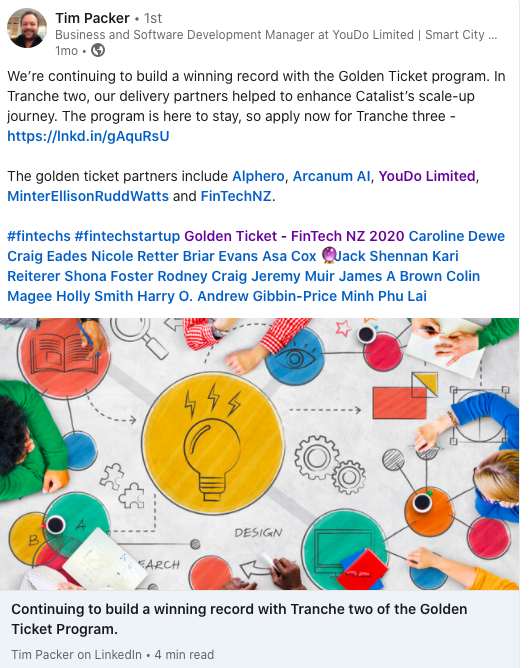
Because these inbound marketing examples have only been introduced this year, it’s too early to gain specific insights into the engagement metrics and lead generation from YouDo’s case studies.
However, this shows how a software company has harnessed the power of inbound marketing and social proof to not only sell their product, but create a business community as a time where innovation needs to be supported.
2. Henry Schein One Australia – Webinars & Guides
When it comes to lead generation marketing for software, webinars and whitepapers are powerful tools for demonstrating the value of your product, how it works, and the specific advantages it brings to individual prospects
Webinars create a two-way conversation between marketers and their customers, providing an in-depth virtual walk-through of the software, insights into its features and benefits, and specific guidance on how it can help those attending the webinar.
93% of b2b marketers say that webinars are the best way to generate high-quality leads
Here are some of the advantages that webinars bring to SaaS marketers:
|
Advantage |
Why? |
|
Easy lead generation |
Participants must provide contact details to participate in the webinar |
|
Cost-effective |
Presenters only need to use software and video conferencing, no need to hire a venue and host a conference |
|
Direct communication |
Participants can ask questions so the marketer can provide direct responses, tailor answers, and handle objections |
|
Feedback |
Obligational feedback surveys can be implemented to help improve future marketing |
|
Resuable content |
Webinars can be recorded and used for marketing and lead generation long into the future, so long as the content is still relevant |
|
Unlimited reach |
Virtual webinars can be attended by hundreds, even thousands of people |
|
Easy to measure |
Performance metrics such as attendance, sales, and engagement can be easily measured through the webinar software |
Leading The Way Forward With Webinars
For Henry Schein One Australia, a leading dental software company, webinars are a key part of their content marketing strategy. Their inbound marketing seeks to educate dentist and practice managers who need to modernize in an industry that is becoming increasingly competitive.
This year, webinars became even more popular as a virtual, socially-distanced, yet personalized marketing tool
For Henry Schein One Australia, a dental software company with leading practice management solutions, webinars became the viable digital alternative after all conferences had to be cancelled due to *ahem* 2020.
When the global situation forced Australian states to go into lockdown and put significant restrictions on businesses, including healthcare providers, dental practices had to create socially-distanced and contactless processes.
Henry Schein One Australia responded by adapting their product offering to help dentists implement these processes, and quickly created a free webinar to show dentists how this system could help them stay open safely.
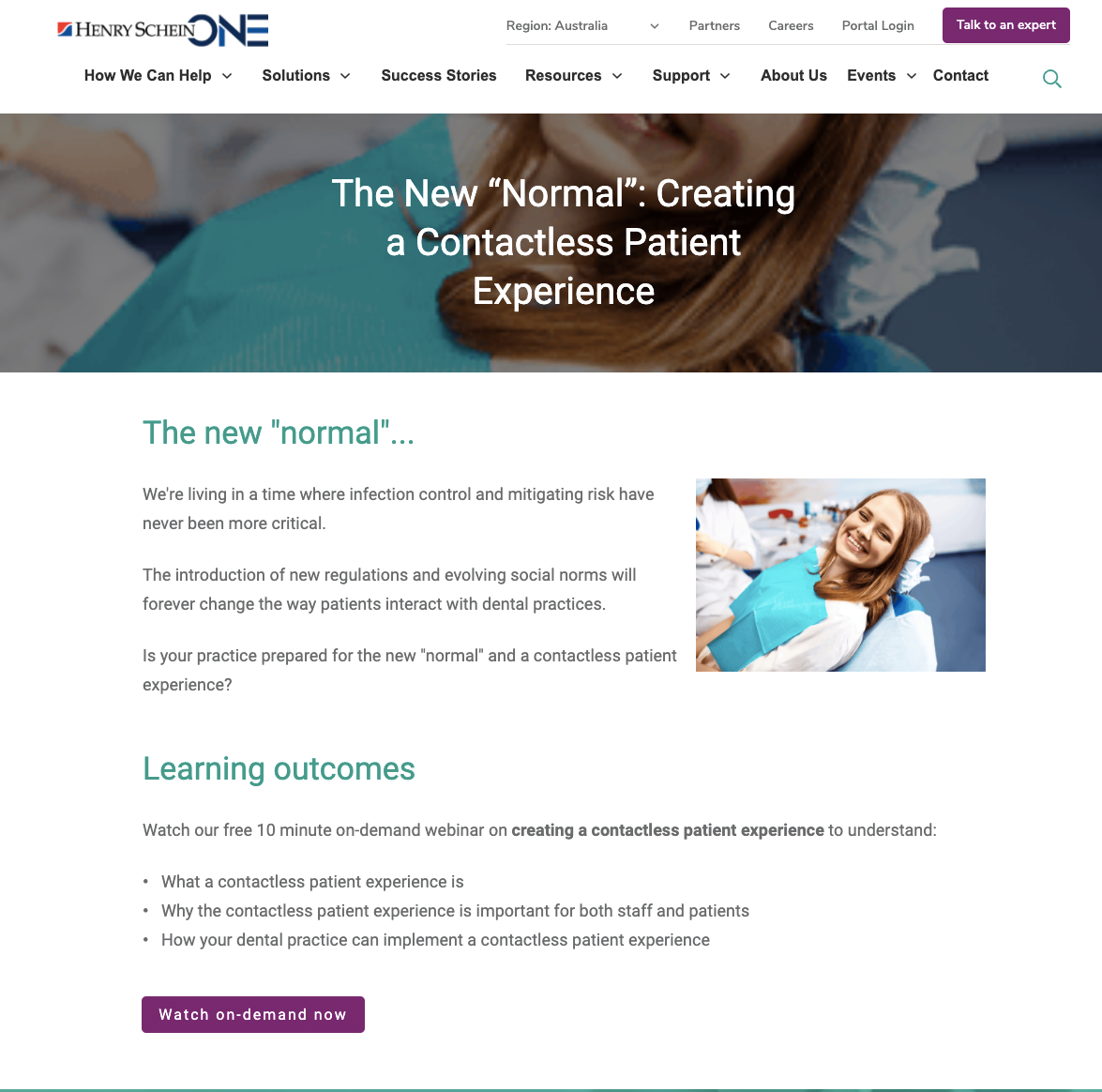
The results were staggering. Henry Schein One saw an increase of over 500% as hundreds of leads downloaded and watched the webinar
By recognizing its role as an educator and provider for oral healthcare practitioners, Henry Schein One Australia used inbound marketing examples and best practices to support hundreds of dental practices during tough times.
Offering The Latest Research With Guides
Henry Schein One Australia uses an effective content marketing strategy with inbound marketing examples that are most useful to their target audience
Because dentistry is a profession requiring years of academic study, attention to detail, and a genuine interest in scientific research, Henry Schein One’s inbound marketing strategy has to cater to a well-studied audience that is used to pouring over scientific material.
The company invests in a significant amount of industry research, compiling data and insights from thousands of dental practices worldwide, to create research-backed guides that help dentists understand the importance of dental software.
Using the type of content that is most appealing to dentists, Henry Schein One is able to:
- Educate dentists about modern business practices
- Agitate specific pain points
- Demonstrate the value of dental software as a solution
Alongside their webinar responding to the need for a contactless experience in dental practices, Henry Schein One Australia released a Best Practice Guide that outlined what dentists should do to protect their business and community.
The guide was downloaded 359 times, a 54% increase from previous guides, demonstrating the value of this responsive, data-driven content to dental practices.
As a result of their innovative software and responsive inbound marketing strategy, Henry Schein One Australia overachieved their onboarding target by 26%
Those are some serious results from some pretty simple inbound marketing examples
Henry Schein One Australia’s content marketing strategy is proof that, by focusing on providing immediate value to your target audience and focusing on education instead of product features, you can see some serious success with inbound marketing.
3. Growth Channel – From Facebook Groups To Content Partnerships
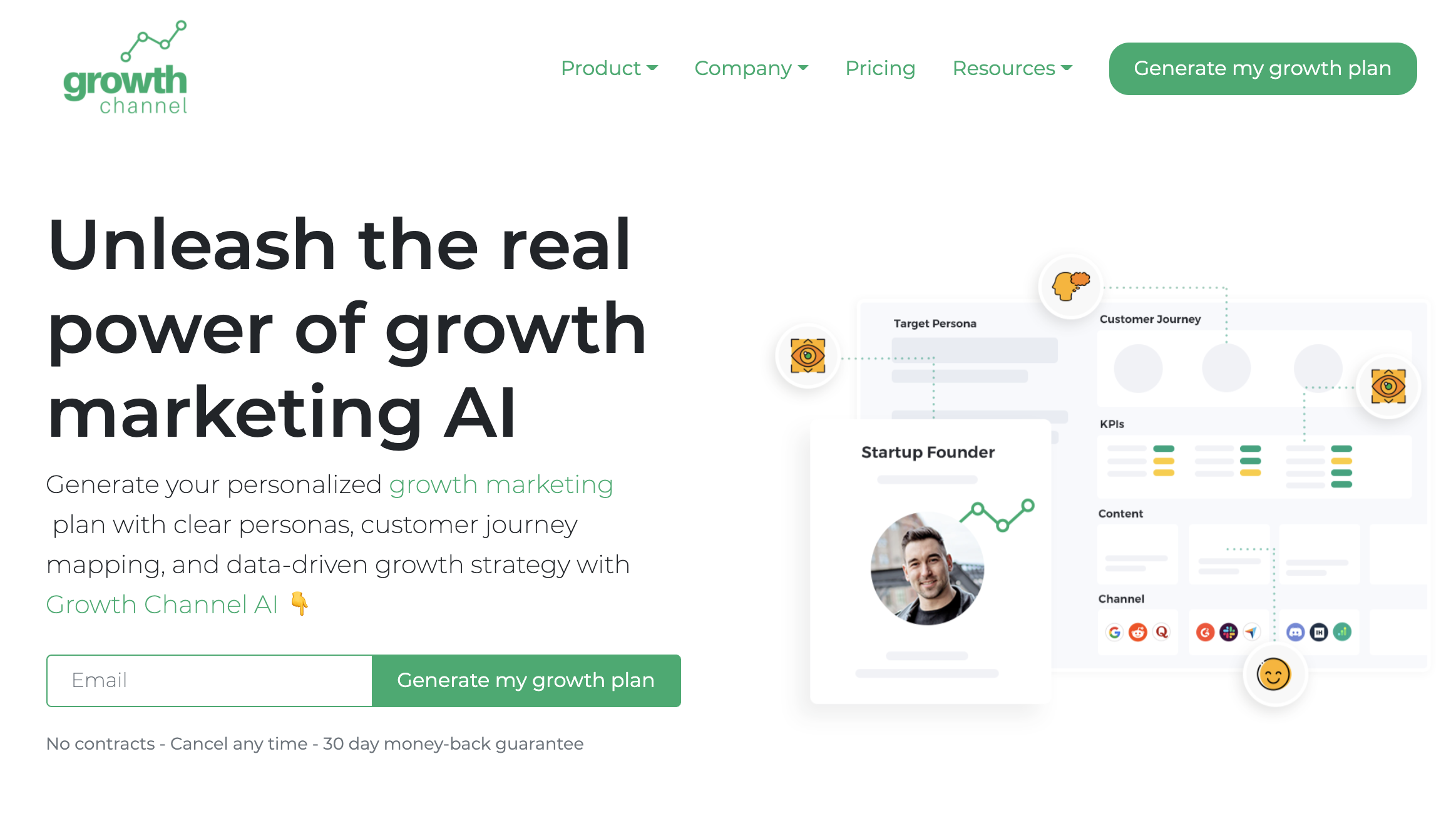
1.4billion people use Facebook groups.
A lot of these Facebook groups are for strictly piss-taking purposes – my personal favourite is “A group where we all pretend to be ants in an ant colony” which has now reached 1.9 million loyal members.
But, because of the sheer number of users on this world-dominating platform, there are also thousands of industry-specific marketing groups where professionals exchange ideas, collaborate on projects, and discuss solutions to specific challenges.
Sure, it can be a minefield, but as long as you avoid the spammy posts and false gurus, you can find get some really valuable insights for your inbound marketing strategy – you can even generate leads and acquire customers.
At least, that’s what Growth Channel has been doing – very successfully, too.
Growth Channel uses AI to create personalized marketing plans for startups and small businesses – so the importance of inbound and content marketing isn’t lost on these guys.
As a company that is dedicated to finding and automating the best marketing practices for businesses, gathering insights into the latest and greatest strategies from Facebook Groups has become both their main method of creating content and a key method of directing traffic to their website
Here’s the process:
- Growth Channel’s team joins numerous Facebook Groups relating to SaaS
- They start making posts asking members to provide their winning strategies (like this one)
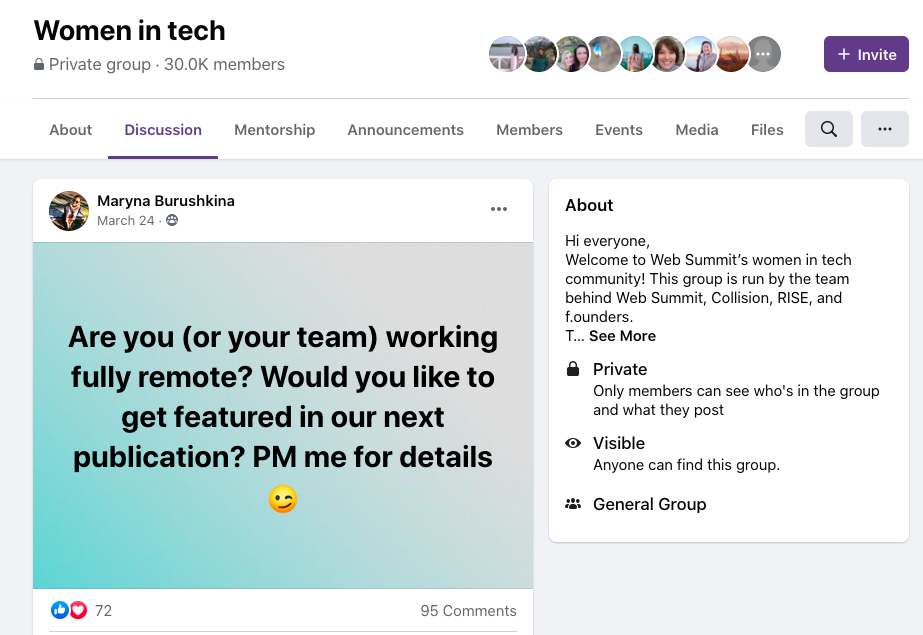
- Willing contributors provide information in a collaborative form
- Growth Channel turns this form into a listicle-tyle article like this one
- Growth Channel alerts contributors when the article is published
- Contributors (sometimes 100+) share the article for their own marketing strategy
- Growth Channel sees an influx of leads from prospects who’ve come across the article
The collaborative, community-centric nature of this type of inbound marketing makes it Growth Channel’s favourite type of content creation – it gets the most engagement on their platforms, with open rates of over 90% in some of their listicles.
This method was particularly successful this year, as the 2020 situation caused many businesses to look around for successful work-from-home strategies. Perhaps this puts a little silver lining on the situation, as some companies become less competitive and more collaborative and community-focused during challenging times.
As contributors share their tried-and-tested methods, and in doing so put their brand’s reputation on the line, the resulting content is (usually) guaranteed to be valuable and relevant to readers.
This is called a content partnership. It can be a powerful way to increase the impact of your inbound marketing.
Think about it: everyone involved (including your company) has internal links throughout the blog, everyone shares the blog to their own audience, so 50 different audiences get access to your site – maximizing the lead generation opportunities.
Now, we know what you might be thinking “Looks like I just get 50 people to contribute and basically write the blog for me and share it to their 50 audiences? Sweet!”.
Not so fast. If you want to use content partnerships to successfully widen your reach, you’ve got to lay down some rules and set a clear standard for your content.
Here are a few things to consider:
- Will your company benefit from outside voices?
- Can you thoroughly fact-check every contribution before publsihing?
- How will you choose and narrow down the online communities to engage with?
- To what extent will you allow contributors to self-promote on your own blog?
Once you have a clear idea of who you want to talk to and what you want to achieve from a content partnership, you can start finding the online communities you can start working with
If you’re interested in this inbound marketing example, but you’re unsure of how to get started, you could hire a content marketing agency to help you out.
Conclusion: These Inbound Marketing Examples Are Simple, Actionable, and Relevant
In times like this, where marketers face the challenge of being both organized and responsive, knowing what other SaaS companies are doing with their marketing can be valuable – even inspiring.
We’ve shared countless content marketing statistics and lofty strategies, but telling success stories from growing SaaS businesses could be even more valuable to marketers who just need to see what’s working around the world right now.
What we love about these inbound marketing examples is that they’re pretty simple. They focus on the things that count:
- Education > Product features
- Community > Competition
- Service > Software
So if you take anything away from this little blog, let it be this: sometimes the simplest inbound marketing examples are often times the most effective.
Got any questions? Talk to us.

Ulf Lonegren
Ulf is one of the co-founders here at Roketto. His passion shines brightest when tasked with increasing business growth through inbound marketing. If you want to talk strategy, give Ulf a shout and you’re likely to see him spark with excitement.
















2.png)
2.png)




